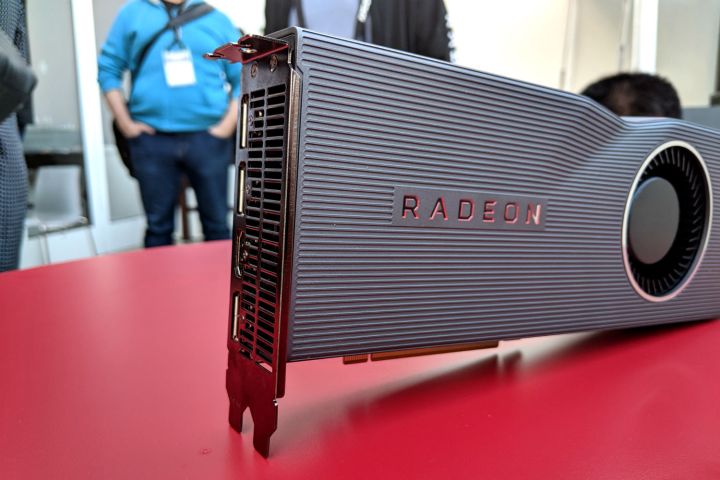
AMD’s RX 5700 graphics cards face stiffer competition than anyone expected after their Computex reveal, with Nvidia’s new Super GPUs seeming to swoop in at the last minute to undercut and outperform AMD’s first truly new cards since 2017’s Vega. Early rumors suggested that the new RX 5700 series could see a price cut to take on Nvidia, in what appears to be a back-and-forth game of leapfrog brinkmanship, and now AMD has confirmed a new pricing strategy. Now, days ahead of the July 7 launch of the Radeon RX 5700, AMD revealed that gamers can save up to $50 on its new line of GPUs.
Nvidia and AMD have gone back to back with graphics card teases and announcements in recent months, with Nvidia dropping a “Super” teaser video just before AMD’s Computex unveiling of its Navi, or rather, RDNA-powered Radeon 5700 and 5700 XT graphics cards. Clearly planned to disrupt AMD’s debut, Nvidia’s new Super cards made their own in early July, following a more in-depth 5700 reveal at E3. With added performance and a competitive price, these new Super cards seemed to torpedo AMD’s upcoming launch before it had even gotten started.

But that may no longer be the case, as AMD is striking back at rival Nvidia by announcing pre-launch price drops on its Radeon RX 5700 line. The Radeon RX 5700 will be priced starting at just $349, a $30 discount from the original $379 price, while the XT model will be priced at $399, or a $50 savings from the original $449 price. The 50th Anniversary Edition card will be available for $449, AMD said in a statement.

It’s unclear if AMD and Nvidia had planned their respective responses to each other’s moves. A cynical stance on Nvidia’s new Super graphics cards could easily conclude that the refresh is more of a GPU reshuffling and rebinning which could quite easily have been in place since Turing’s original launch in 2018. You might conclude that it held on to this additional few percent points of performance headroom as a counter to whatever AMD had planned next. The original Super tease would certainly suggest as much. As did the eventual unveiling of performance and pricing after we all learned what the new RDNA cards were capable of.
But with AMD’s new pricing strategy, we have to ask the question, did AMD plan this out too? It must have known that the Super reveal would look to steal Navi’s thunder, so could it have held back on final pricing to the last hour to force Nvidia’s hand?
At the new lower prices for the RX 5700, RX 5700 XT, and 50th Anniversary Edition of the RX 5700 XT, if AMD’s performance claims prove true, the new Radeon graphics cards could become more cost-effective alternatives to gamers eyeing Nvidia’s new Super GPUs.
Updated July 5 to include confirmation and updated pricing details from AMD.




